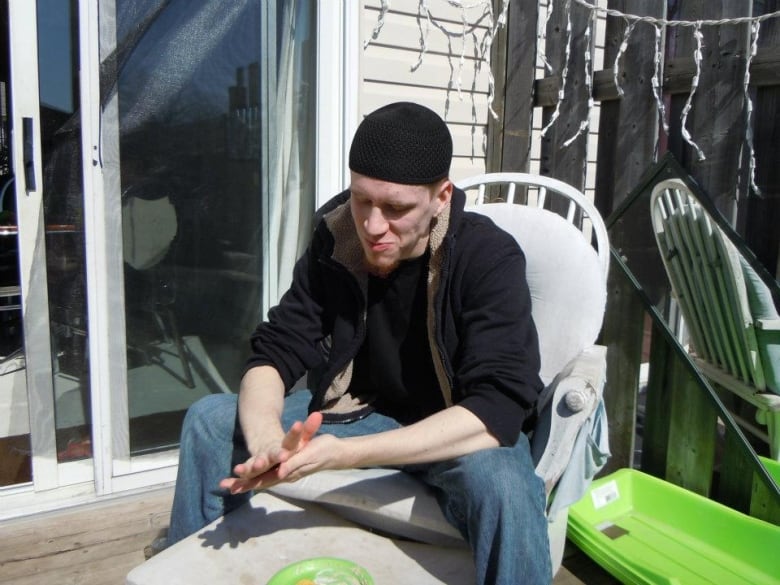Why the community wasn't warned about Aaron Driver
Public warning would have been both legally problematic and 'counterproductive,' expert says
Police, lawyers and terror experts say there are both legal and operational reasons why people in Strathroy, Ont., weren't warned that known ISIS sympathizer Aaron Driver was living in their community.
The revelation that Driver, who was killed in a confrontation with police on Wednesday, was suspected of planning an attack has sparked anger and concern in the small southwestern Ontario town.
Police inform the public if a sex offender is living among them, Strathroy resident Maria Melo told CBC News. "If he's a terrorist, they don't tell nobody."
But "there is nothing in legislation that would allow us to issue a public warning [about Driver]," RCMP Supt. Jamie Jagoe said in a news conference on Friday.
"He had every right to live in this community and by all accounts he lived in this community and led a quiet lifestyle," said Jagoe.

Driver, 24, had not been charged with any crime. He was living under a court-imposed peace bond that acknowledged there were "reasonable grounds to fear that he may participate, contribute directly or indirectly in the activity of a terrorist group" because he had communicated with what the RCMP called well-known ISIS supporters in the U.K. and the U.S.
He had also expressed radical views and tweeted support for ISIS under an alias.
Lorne Dawson, a sociology and religious studies professor at the University of Waterloo specializing in terrorism and radicalization, said a public warning about Driver would not just pose a problem from a "civil liberties" perspective — it would likely be "counterproductive" from a counterterrorism perspective.
The goal of a peace bond is not only to stop someone from committing an act but also to "reconsider their choices" and move from radicalism back to functioning as part of society, Dawson said.
"But if the neighbourhood all the sudden is up in arms and protesting or shunning the person ... then of course you would undermine that possibility altogether."

Dawson was hired as an expert witness to prepare a report in Driver's court case and met him last year.
"When most of us who dealt with him last dealt with him, we were under the impression there at least was a good likelihood that the result of the peace bond would be that he might start moderating his views and backing off from some of his more extreme perspectives," he said.
There's a difference between "talking radical and doing anything," Dawson said.
"This is the conundrum. Thousands of people engage in the [radical] discourse. Five or six do something," he said. "We cannot spend all our time pursuing and chasing everyone who says things like Aaron Driver does."
Sukanya Pillay, a lawyer and executive director of the Canadian Civil Liberties Association, said she understood why people in Strathroy want to know why they weren't warned.
"Of course you can understand why members of the public would ask that question," she said. "[But] you can also understand that the police don't want to create panic or tip off the suspect until they have the information that they need to apprehend the person."
"Ultimately you want to do two things, right? You want to keep people safe and prevent an attack. And you want to capture the person who's actually guilty of planning or trying to carry out an attack," Pillay said. "You don't want to wrongly identify innocent people or you don't want to go on wild goose chases after the wrong people."

Canadian legislation needs to find a "middle ground" between warning the public about a potential threat and respecting civil rights and liberties, said Kamran Bokhari, a fellow with George Washington University's extremism program and a senior lecturer at the Security and Policy Institute at the University of Ottawa.
One major difficulty in alerting the public, he said, is knowing when someone is "moving from the realm of just, you know, mouthing off foolish and radical ideas to actually taking the law in their hand and engaging in physical acts of violence or potentially physical acts of violence."
"I sympathize with those people who said, 'well, we were living next door to a potentially dangerous person and we did not know,'" Bokhari said. "The question is, how you legally do this?"
With files from Mark Gollom and The Canadian Press


